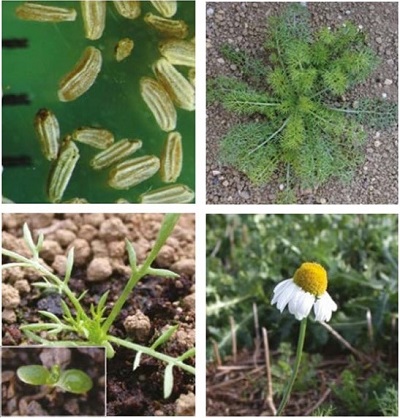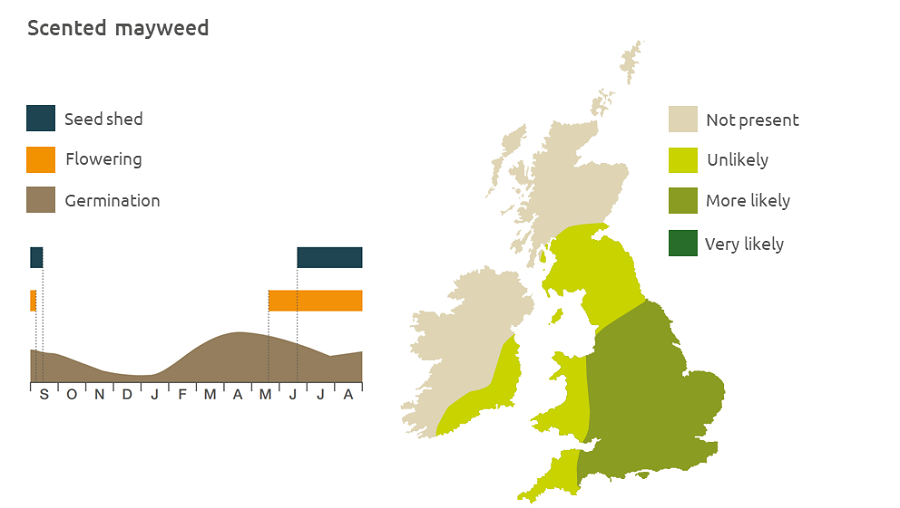- Home
- Knowledge library
- Distribution and biology of scented mayweed in the UK
Distribution and biology of scented mayweed in the UK
Scented mayweed is a competitive broad-leaved weed that can cause yield losses in cereals and oilseed rape. Find out how to identify and control it.
Overview
Scented mayweed (Matricaria recutita) is locally abundant on arable land and causes yield loss in cereals and oilseed rape. It emerges in winter and early spring; if germinating in autumn, it overwinters as a rosette. It infests both winter and spring crops, which makes long-term management without herbicide difficult. The seedbank can survive short-term grass leys.
- It is particularly competitive in winter wheat, winter oilseed rape and spring crops
- It has value to biodiversity
Description
It is a branching annual dicotyledon, 60 cm tall, with feathery finely divided leaves. The flowers resemble those of daisies.
Key features
Flowers: The flowerheads give off a distinctive chamomile smell when crushed. When the flowerhead is split, the end of the stem where the petals are attached is hollow.
Lookalikes
Scented mayweed may be confused with scentless mayweed. The mayweeds are difficult to distinguish in their nonflowering stages.

Location and life cycle

Geographic distribution
Scented mayweed is a lowland plant or arable cereal fields and waste places.
Soil type
It is usually found on light soils, but also occurs on heavy clays and loams.
Seed statistics
- Seed longevity: >5 years
- Germination depth: 0.5 cm
- Seed weight: 0.1 mg
- Seeds/plant: 5,000
Management
For advice on herbicides, please speak with your agronomist or adviser.
When was this information last updated?
This page is based on content from the encyclopaedia of arable weeds publication. Since it was first released in 2008, the publication has been redesigned several times but not revised. However, it remains a good foundation for general information on the distribution and biology of weeds.

